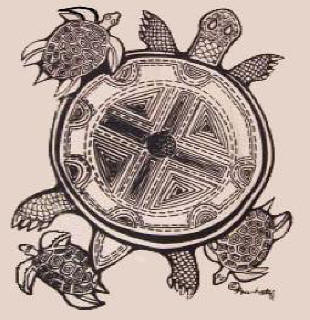 |
LITR 4326
Early American Literature Research Posts 2016 (research post assignment) Research Post 1 |
 |
Haley
Stilwell
3/4/2016
Where’s the Morality in That?
The
idea of mass fear controlling a population and being used to push the political
agenda is a terrifying and overwhelming thought. Any decision made out of fear
is one that certainly is not made by a clear and level mind. While discussing
research topics in class, I became very curious to know what exactly moral
hysteria or panic is and could it be related to the interactions with Native
Americans in early American settlement. Through my research I sought out to find
a clear and concise definition of moral hysteria in order to gain a deeper
understanding of the texts we discuss in class. Is it a tool used to eliminate
social and cultural threats, or is it genuinely a deep rooted fear that clouds
an entire group’s moral interactions with one another?
I had quite a difficult time finding an accurate definition for moral
hysteria, but by using the term moral panic, I was able to find an abundance of
information. Oxford English Dictionary defines moral panic as:
an
instance of public anxiety or alarm in response to a problem regarded as
threatening the moral standards of society (http://www.oxforddictionaries.com/definition/english/moral-panic?q=moral+panic).
Moral
panic is not experienced by a single person, but instead by the “public”. This
indicates that the fear is widespread. In Columbus’s Letters, Columbus sparks an
initial fear towards the Native Americans by writing, “Alone in my trouble,
sick, in daily expectation of death, and encompassed about by a million savages,
full of cruelty, and our foes, and so separated from the Blessed Sacraments of
Holy Church, my soul will be forgotten if it here leaves my body. Weep for me,
whoever has charity, truth and justice.” (2.13). By describing the Native
Americans as “savages,” “cruel,” and “foes,” he creates a negative connotation
with Native Americans as a whole. He also creates a threat to the Christian
faith when he writes that they are “separated” from Christianity. The separation
is so great, that he believes “his soul will be forgotten” if he dies among the
presence of the Native Americans. The Native Americans have now become a
barricade between Christians and their eternal salvation.
The belief of Native Americans' savagery remains present to Early
American travelers many years following Columbus’s expedition. Scholar Karen
Ordahl Kupperman studied the writers of travelers who followed after Columbus
and while she found that many of the travelers had genuinely kind things to say
in regards to the Native Americans, “Many writers directly contradicted
themselves. Richard Whitbourne, for instance, believed Indians were thieves, but
elsewhere remarked that returning fishing fleets found all of their equipment
just as they left it” (Kupperman 264). These contradictions show the writers to
be unreliable in their recollection of events and possibly in the description of
the Native Americans’ character. Kupperman also notes that some of the men
writing about the hostile and “brutish” descriptions of Native Americans, “had
never been to America” (265).
Similarly, Alfred A. Cave writes that Early American traveler, Richard Hakluyt,
recounted tales of the Native Americans “were under the thraldom of the devil,
worshipped the infernal one, and practiced witchcraft” (Cave 6).
Kristina Bross goes as far as saying,
“To observant Puritans, the death of an Indian was always a sign from God”
(Bross 325). These writings incited fear within the Early American settlers as
they believed Native Americans were threats to their lives, both physical and
eternal.
Through my research, I have found that these unreliable writings were
used to evoke fear within the settlers in regards to Native Americans. The
inconsistency of the descriptions allow the readers to believe that the
travelers were attempting to sway the settlers through fear. By inciting fear,
they are also inciting a call to action. The need to eradicate the threats to
the settlers lives would result in the massacres of many Native Americans, thus
removing any barricades for further American exploration and colonization.
Works
Cited
Bross, Kristina. "Dying Saints, Vanishing Savages: "Dying Indian Speeches" in
Colonial New England Literature." Early American Literature 36.3 (2001):
325-52. JSTOR. Web. 2 Mar. 2016.
Cave,
Alfred A. "Richard Hakluyt's Savages: The Influence of 16th Century Travel
Narratives on English Indian Policy in North America." International Social
Science Review 60.1 (1985): 3-24. JSTOR. Web. 2 Mar. 2016.
"moral panic, n." OED Online. Oxford University Press, December 2015.
Web. 1 March 2016.
Ordahl Kupperman, Karen. "English Perceptions of Treachery, 1583-1640: The Case of the American 'Savages'." The Historical Journal 20.2 (1977): 263-87. JSTOR. Web. 2 Mar. 2016.
|
|
|
|


